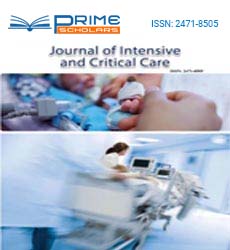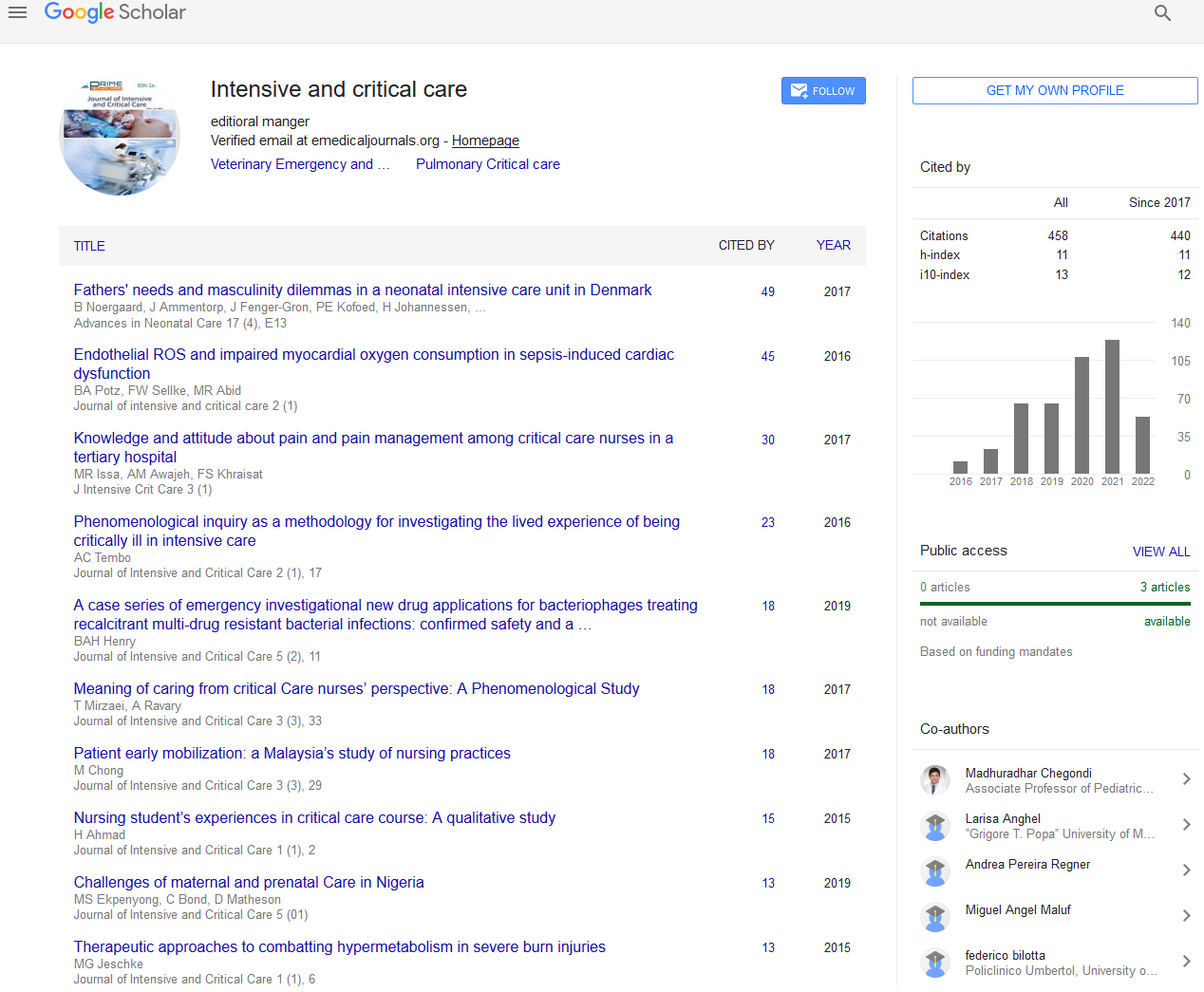Short Communication - (2024) Volume 10, Issue 3
Ventilator Strategies for Acute Respiratory Distress Syndrome Patients
Charley Heaton*
Department of Biomedical Informatics, Columbia University, USA
*Correspondence:
Charley Heaton,
Department of Biomedical Informatics, Columbia University,
USA,
Email:
Received: 29-May-2024, Manuscript No. IPJICC-24-20542;
Editor assigned: 31-May-2024, Pre QC No. IPJICC-24-20542 (PQ);
Reviewed: 14-Jun-2024, QC No. IPJICC-24-20542;
Revised: 19-Jun-2024, Manuscript No. IPJICC-24-20542 (R);
Published:
26-Jun-2024, DOI: 10.35248/2471-8505-10.3.22
Introduction
In the realm of modern medicine, few inventions have been
as transformative and indispensable as the ventilator. These
machines have become synonymous with critical care, serving
as lifelines for patients struggling to breathe due to various
medical conditions. Ventilators, also known as mechanical
ventilators or respirators, are complex devices designed to
provide artificial ventilation to patients whose respiratory
function is compromised. From the early prototypes to the
sophisticated models of today, ventilators have evolved
significantly revolutionizing the management of respiratory
failure and saving countless lives in the process. The history
of ventilators can be traced back to ancient times when
primitive methods of artificial ventilation were used. One of
the pioneering developments was the invention of the iron
lung in the 1920s, which provided negative pressure ventilation
by enclosing the patient’s body in an airtight chamber [1,2].
Although effective, these devices were bulky, cumbersome,
and limited in their application. The breakthrough came with
the development of positive pressure ventilators in the 1950s,
which delivered pressurized air directly into the patient’s lungs
through an endotracheal tube or a mask. This innovation
revolutionized respiratory care, enabling more precise control
over ventilation parameters and facilitating the treatment of a
wide range of respiratory conditions.
Description
Over the decades, ventilator technology continued to advance
rapidly, with improvements in design, functionality, and safety
features. Modern ventilators are sophisticated medical devices
comprising various components that work together to deliver
mechanical ventilation to patients in need. Ventilator Console
serves as the control centre of the ventilator, housing the
electronic circuitry, display screens, and user interface panels.
Breathing Circuit Consisting of tubing, valves, and connectors,
the breathing circuit delivers oxygen-enriched air from the
ventilator to the patient’s airways and removes carbon dioxide
from the lungs. Ventilators offer a range of ventilation modes
tailored to meet the specific needs of patients, including
assist-control ventilation, pressure support ventilation, and
synchronized intermittent mandatory ventilation. Sensors and
Alarms ventilators are equipped with sensors that monitor
various parameters such as airway pressure, tidal volume,
and oxygen concentration. Alarms alert healthcare providers
to any deviations from the pre-set parameters, ensuring
patient safety. Power source ventilators can be powered by
electricity, batteries, or compressed gas, providing flexibility
in various clinical settings, including hospitals, intensive care
units, and ambulances [3,4]. Ventilators play a crucial role in
the management of respiratory failure resulting from diverse
etiologist, including Acute Respiratory Distress Syndrome
(ARDS), pneumonia, Chronic Obstructive Pulmonary Disease
(COPD), and neuromuscular disorders.
Conclusion
Ventilators provide vital support to patients during critical
phases of illness, helping to maintain adequate oxygenation
and ventilation while the underlying condition is treated. In
addition to supporting patients with acute respiratory failure,
ventilators are also utilized in surgical settings to facilitate
anaesthesia and control breathing during invasive procedures.
Anaesthesia ventilators are specially designed to deliver a
precise mixture of gases and control the depth of anaesthesia,
ensuring patient comfort and safety during surgery. Despite
their lifesaving capabilities, ventilators are not without
challenges and limitations. One of the primary concerns is the
risk of ventilator-associated complications, including ventilatorassociated
pneumonia, barotrauma, and ventilator-induced
lung injury.
Acknowledgement
None.
Conflict Of Interest
The author’s declared that they have no conflict of interest.
References
- Sayed M , Tamim H, Mann NC (2015) Description of procedures performed on patients by emergency medical services during mass casualty incidents in the United States. Am J Emerg Med. 33(8):1030-1036.
[Crossref] [Google Scholar] [PubMed]
- Aguilar SA , Lee J, Dunford JV, Castillo E, Lam B, et al. (2013) Assessment of the addition of prehospital Continuous Positive Airway Pressure (CPAP) to an urban Emergency Medical Services (EMS) system in persons with severe respiratory distress. J Emerg Med. 45(2):210-219.
[Crossref] [Google Scholar] [PubMed]
- Dib JE, Matin SA, Luckert A (2012) Prehospital use of continuous positive airway pressure for acute severe congestive heart failure. J Emerg Med. 42(5):553-558.
[Crossref] [Google Scholar] [PubMed]
- Stoltze AJ, Wong TS, Harland KK, Ahmed A, Fuller BM, et al. (2015) Prehospital tidal volume influences hospital tidal volume: A cohort study. J Crit Care 30(3):495-501.
[Crossref] [Google Scholar] [PubMed]
Citation: Heaton C (2024) Ventilator Strategies for Acute Respiratory Distress Syndrome Patients. J Intensive Crit Care. 10:22.
Copyright: © 2024 Heaton C. This is an open-access article distributed under the terms of the Creative Commons Attribution License, which permits unrestricted use, distribution, and reproduction in any medium, provided the original author and source are credited.

